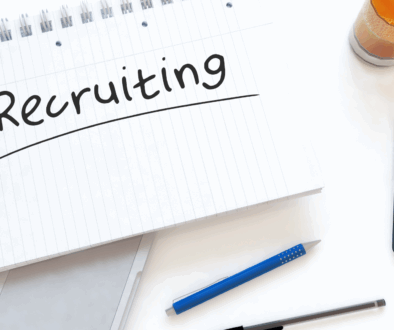How to Spot a Dysfunctional Team
Building and cultivating successful teams is a fine art. It takes skill, practice, intuition, and a little finesse.
It starts with recruiting and hiring: finding high-quality candidates that are also a culture fit. But, it’s also about committing to the details and handling them with care over time: creating the environment necessary for that group of hired individuals to thrive.
Sometimes, however, things go wrong, and teams turn toxic. And research shows that serious strife within a team can have major negative workplace implications.
For individual employees, team discord can lead to stress, low job satisfaction, poor productivity, and burnout. At a team level, it can impair overall productivity, collaboration, and learning. For employers, dysfunctional teams increase costs when firms are forced to invest in coaching, conflict resolution, performance management, and new recruiting initiatives to replace churned employees.
It’s critical to spot team red flags early and take action to right the ship as quickly as possible, but to understand what a dysfunctional team in the workplace looks like, it’s important first to understand the attributes of a high-performing team.
Characteristics of a High-Functioning Team
How They Function
Healthy teams have clearly defined boundaries around functionality and clearly defined team goals.
As a unit, they’re aligned on what they’re working towards together and aware of the strategy to get there. As individuals, employees are clear on where their jobs start and end and how their work contributes towards the larger team ecosystem. Management has made the hires necessary to achieve team goals, has provided employees with the tools to do their jobs, and has created an effective, efficient decision-making procedure.
While it takes buy-in and collaboration from team members to achieve this functionality, the responsibility falls largely on managers and HR professionals to ensure the right structure is in place for teams to thrive.
How They Interact
That structure and functionality create the foundation for a high-performing team to exist, but healthy teams cannot function without certain cultural and interpersonal attributes.
On a healthy team, team members trust one another and have a culture of mutual respect. Everyone feels comfortable articulating their thoughts, even when it comes to conflicts and setbacks, which are used as opportunities for new discoveries, growth, and creativity. Team members value each other’s differences in views, personalities, and approaches. Positive communication keeps everything moving and sets the tone for constructive collaboration, coordination, and creativity.
When team members are working together in this way, it creates a positive feedback loop–strengthening and building on the functionality of the group (and vice-versa).
Characteristics of a Dysfunctional Team
Unhealthy teams tend to have functional issues, relational issues–or both. Diagnosing an unhealthy team is all about looking at how a team is set up and how they interact to understand where they’re breaking down.
Based on the framework for a high-functioning team, here’s a checklist for auditing the health of a dysfunctional team:
How They Function
- Clear individual and team-wide goals
- Team-wide understanding of strategy to achieve those goals
- Clear prioritization of work
- An effective, efficient decision-making process
- Full headcount with relevant experience
How They Interact
- Team members trust one another; culture of mutual respect
- Consistent, positive communication and collaboration
- Everyone contributes
- Ability to address and strategize around conflict
- Team members value each other’s differences
The “Symptoms” of a Dysfunctional Team
All teams experience hiccups and setbacks, so how do you know when a team is really breaking down?
The traits listed above identify the characteristics of a dysfunctioning team, but these characteristics represent the underlying causes of team failure. While they are useful for identifying areas where HR can step in to rectify a bad team situation, they don’t necessarily represent how team dysfunction presents itself in the workplace.
Below are some noticeable signs that a team is malfunctioning. These are the “symptoms” that signal that something is going wrong–that there is a breakdown in the way a team is set up, in how it’s functioning, or in how employees are working with one another:
- Turnover: Pay attention to employee departure patterns. A mass exodus of workers from a specific team is a good indicator of group dysfunction.
- Burnout and Withdrawal: Often, when employees are overworked with no end in sight or have a strained relationship with team members, they’ll develop a kind of “what’s the point?” attitude. The apathy or cynicism of burnt-out employees is usually pretty obvious–especially if you’re regularly measuring employee engagement–and is a reliable signal that something has gone wrong.
- Siloing: Communication silos happen when teams lack clear engagement rules and different perspectives aren’t respected. If a team is experiencing major communication breakdowns on a regular basis, it’s likely they’re dysfunctioning, and it’s time for a reset.
- Unfinished and Delayed Projects: Incomplete or delayed work is a very tangible metric for assessing the health of your teams. If a team can’t get work over the finish line, there’s likely a breakdown in process or interpersonal relationships.
- Gossip Culture: People working together on teams will inevitably have conflict. However, healthy teams (as outlined above) will use that conflict as an opportunity for new discoveries, growth, and creativity. Unhealthy teams, however, will hold onto resentments–often resulting in gossiping, cliques, and constant complaining–which are contagious in a group setting.
- Lack of Trust: Trust is the foundation of all successful teams, and the absence of trust is a billboard on the road to dysfunction. In a team setting, an absence of trust makes itself known through competitiveness, siloing, lack of collaboration, and more.
- Work Imbalance: On the best teams, everyone contributes–and contributes in a meaningful way. Healthy team teammates are committed to and working towards the same goals. On a dysfunctional team, one or two members often carry the bulk of the workload. Pay attention to these imbalances: they’re signaling that something is wrong.







